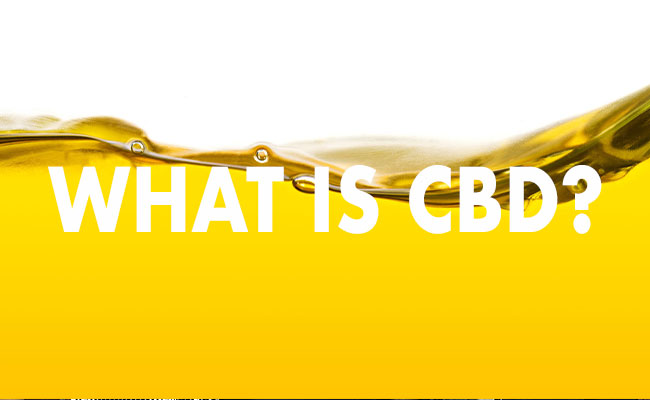
What’s the Difference? | CBD vs. CBG
WRITTEN BY THY PHAM AND DR. SWATHI
There are more than hundreds of components found in the cannabis plant, all of which are being studied and understood more and more everyday. Although we’re becoming more familiar with CBD and its benefits, another cannabinoid called CBG has made headlines, and has surely grabbed our attention! At first glance, CBG may resemble CBD, but details will show important differences between the two.
What is CBG?
CBG, also known as cannabigerol, is thought of as the parent compound to cannabinoids, such as CBD, CBC, and THC. Since CBG is a precursor, it is quite challenging to acquire higher yields of it from the cannabis plant. There are typically very low concentrations of CBG in a mature cannabis plant, so the extraction process requires a specific chromatography mechanism to isolate and filter the cannabinoid. This is why wellness formulations that contain CBG are particularly rare. With greater difficulties in extracting CBG, it may also be more costly to obtain when compared to CBD. However, when CBG is obtained, research suggests that it has potential to directly bind to CB1 and CB2 receptors in the brain—unlike CBD which has been thought to be a modulator of the endocannabinoid system without directly binding to the cannabinoid receptors. As a result, CBG may elicit a direct response in activating neurotransmitters responsible for regulating appetite, pleasure, sleep, and pain. Another key characteristic about CBG is its ability to restrict uptake of both serotonin and GABA receptors more effectively than CBD. By increasing levels of serotonin and GABA in the brain, this proposes that CBG can provide possible anti-depressant and anti-anxiety effects.
What research is there on CBG?
When comparing CBD with CBG, CBD’s effects have been proven in a greater number of clinical trials. Evidence shows that CBD plays a role in treating epilepsy, reducing anxiety, lowering muscle spasms in multiple sclerosis, and improving sleep quality. While research towards CBG’s therapeutic profile is currently ongoing, there are fewer published clinical trials establishing its pharmacological effects in patients. This may be due to the fact that isolating CBD is more common than isolating CBG. In other words, it may be easier to research CBD due to its availability, however, this does not infer that CBG is any less useful. As the negative stigma associated with cannabis use transitions towards a more accepting perspective, we’ve started to see promising results behind the therapeutic claims. There are a few early studies that prove CBG is definitely worth the investment.
Can CBG improve my gut?
Endocannabinoid receptors are located throughout the body, including the digestive system. For this reason, it’s no surprise that CBG may be used to target inflammation in gut related diseases. Recent studies in mice have shown CBG to be an effective agent in reducing the amount of swelling within epithelial cells located in the colon. In addition, CBG showed to reduce nitric oxide production, a molecule contributing to inflammation. Due to these findings, CBG can be considered for human trials, as it shows promise in helping with swelling in Inflammatory Bowel Diseases, such as Ulcerative Colitis and Crohn’s Disease.
Can CBG help boost my immune system?
Routine infections are heavily relied on with treatment of antibiotics. However, antibiotic resistance is now believed to be a threat to our public health system from misuse, and oftentimes, overuse of antibiotics. Luckily, recent studies have discovered that CBG was particularly potent at wiping out one of the most common hospital superbugs, MRSA. Researchers found CBG to inhibit the growth of the MRSA bacteria biofilm just as effectively as Vancomycin, a first line agent for treatment against the microbe. Studies also show that cannabinoids, in general, have the ability to work in combination with other antibiotics to fight against gram-negative pathogens, revealing potential for the therapeutic uses of cannabinoids.
Can CBG support brain health?
CBG has been shown in studies to be an active neuroprotectant agent in mice with presentations of Huntington’s Disease. The non-psychoactive compound has shown abilities to attenuate the effects of 3NP, a toxin released in the brain that contributes with altered mental status and cognitive functioning. In recent studies, CBG was shown to increase the levels of brain antioxidants that were profoundly lowered by 3NP, and also showed modest improvements in motor performance. In addition, CBG showed activity in restoring levels of proteins associated with neurotransmitter function, which may ultimately play a role in treating neurodegenerative disorders. These results open up opportunities for further research into CBG’s beneficial effects regarding its neuroprotective abilities.
Can CBG benefit my skin?
Research has shown that an endogenous cannabinoid system (ECS) exists within the skin, and plays a crucial role in skin proliferation, differentiation, and hormone production. The ECS takes part in a process that regulates the homeostasis of skin cell growth and survival. The disruption of this balance may lead to conditions such as acne, excessive oil production, psoriasis, dermatitis, and hair growth disorders. Fortunately, studies have observed CBG’s ability to modulate CB receptors within the ECS to maintain a balance in skin cell formation and regeneration. One specific study also shows that CBG’s powerful ability to decrease inflammation is a key factor in treating dry skin and chronic skin conditions, such as eczema and psoriasis. In psoriasis, the inflammatory aspect of the disease is characterized as excessive proliferation of keratinocytes, which CBG has been noted to inhibit. As for acne, CBG has demonstrated abilities to alleviate inflammation within sebaceous glands, thus also lowering the appearance of irritated sebocytes. CBG’s impressive effects on the skin not only takes a huge step in treating frustrating skin diseases, but also makes an ideal ingredient for our everyday skincare routine.
Can CBG make me feel “high”?
Despite their differences, CBG and CBD are both non-psychoactive and non-intoxicating, meaning they both do not induce the “high” effect, nor cause impairment. Although CBG is a less abundant cannabinoid, it still shares similar properties to CBD in reducing inflammation and alleviating pain through the CB receptors. Overall, CBG and CBD provide benefits in their individual ways, but they can also work together in a synergistic manner to enhance one another. Using both cannabinoids together activates the entourage effect, a concept that states how using a blend of cannabinoids work better than when used individually. In fact, when taken together, studies suggest that CBG and CBD may offer a more, well-balanced experience for users. So, if you’re having a hard time deciding which cannabinoid to try, why not try both?
References:
- Bíró T, Tóth BI, Haskó G, Paus R, Pacher P. The endocannabinoid system of the skin in health and disease: novel perspectives and therapeutic opportunities. Trends Pharmacol Sci. 2009;30(8):411-420.
- Borrelli F, Fasolino I, Romano B, et al. Beneficial effect of the non-psychotropic plant cannabinoid cannabigerol on experimental inflammatory bowel disease. Biochem Pharmacol. 2013;85(9):1306-1316.
- Colasanti BK. A comparison of the ocular and central effects of delta 9-tetrahydrocannabinol and cannabigerol. J Ocul Pharmacol. 1990;6(4):259-269.
- Devinsky O, Nabbout R, Miller I, et al. Long-term cannabidiol treatment in patients with Dravet syndrome: An open-label extension trial. Epilepsia. 2019;60(2):294-302.
- di Giacomo V, Chiavaroli A, Recinella L, et al. Antioxidant and Neuroprotective Effects Induced by Cannabidiol and Cannabigerol in Rat CTX-TNA2 Astrocytes and Isolated Cortexes. Int J Mol Sci. 2020;21(10):3575.
- Izzo, A., 2009. [online] Cannabisinternational.org. Available at: <http://cannabisinternational.org/info/Non-Psychoactive-Cannabinoids.pdf> [Accessed 15 March 2021].
- Farha MA, El-Halfawy OM, Gale RT, et al. Uncovering the Hidden Antibiotic Potential of Cannabis. ACS Infect Dis. 2020;6(3):338-346.
- Morales P, Hurst DP, Reggio PH. Molecular Targets of the Phytocannabinoids: A Complex Picture. Prog Chem Org Nat Prod. 2017;103:103-131.
- Navarro G, Varani K, Reyes-Resina I, et al. Cannabigerol Action at Cannabinoid CB1 and CB2 Receptors and at CB1-CB2Heteroreceptor Complexes. Front Pharmacol. 2018;9:632.
- Oláh A, Markovics A, Szabó-Papp J, et al. Differential effectiveness of selected non-psychotropic phytocannabinoids on human sebocyte functions implicates their introduction in dry/seborrhoeic skin and acne treatment. Exp Dermatol. 2016;25(9):701-707.
- Russo EB. The Case for the Entourage Effect and Conventional Breeding of Clinical Cannabis: No "Strain," No Gain. Front Plant Sci. 2019;9:1969.
-
Valdeolivas S, Navarrete C, Cantarero I, Bellido ML, Muñoz E, Sagredo O. Neuroprotective properties of cannabigerol in Huntington's disease: studies in R6/2 mice and 3-nitropropionate-lesioned mice. Neurotherapeutics. 2015;12(1):185-199.
--
This article was edited by Dr. Swathi and was written by Element Apothec Scientific Communications Intern, Thy Pham. She is a Doctor of Pharmacy (PharmD) student at West Coast University School of Pharmacy in Los Angeles, California.











